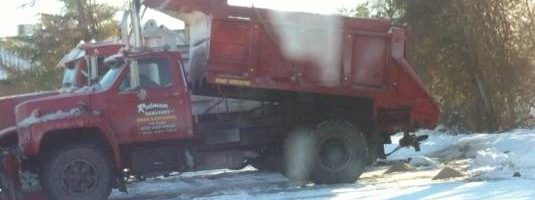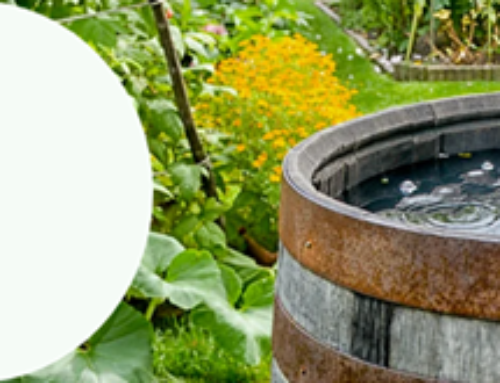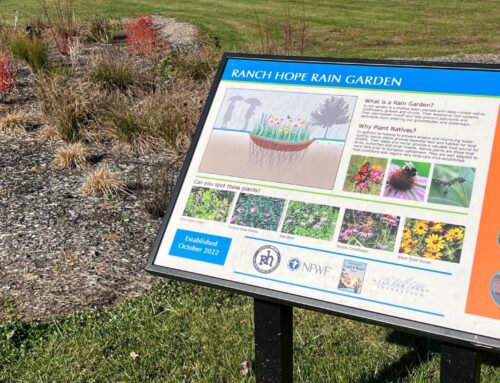As an ecologically minded person, I’d say that I have been “aware” of the “road salt problem.” I’ve recently become more interested in this issue while working on restoring the Tiber Hudson watershed that drains to downtown Ellicott City where the Center’s main office is located. After reviewing some of the past biological assessments, I noted that the reports state that the macroinvertebrate and fish communities were in worse condition than would have been expected by imperviousness alone. Some other impairment was suspected and chloride from road salt was noted as a possibility. Since the long-term watershed goal that I had established for the Tiber Hudson was an improvement in the macroinvertebrate community, I figured that I should look into this potential unidentified impairment, road salt, a little more closely. After even only a little bit of research and some conversations with staff here at the Center, my “awareness” of the road salt problem quickly elevated to “outright alarm.” This issue is right up there with climate change and sea level rise as far as I can tell – how can widespread salinization of our freshwater streams and drinking water supplies not be??
Some of the more alarming facts about road salt from Kaushal et al, 2005:
- Accumulation of salt in aquifers and groundwater has led to increased salinity in streams throughout all seasons and across years;
- If trends in impervious surface coverage and management continue, many surface waters will not be potable for human consumption and will be toxic to freshwater life;
- Elevated concentrations of sodium and other toxic impurities such as cyanide (yes, cyanide!) from road salt are also very problematic;
- If salinization increases at the present rate, baseline concentrations in rural streams will exceed 250 mg/l in the next century; and
- Gradual accumulation of chloride in groundwater affects MANY important ecosystem processes such acidification, mobilization of toxic metals, mortality and changes in reproduction of aquatic plants and animals, altered community composition in riparian areas and wetlands, invasion of saltwater species, interference of mixing in lakes, altered structure of microbial communities, inhibition of denitrification, and influences on primary productivity, decomposition, nutrient cycling and trophic interactions.
So assuming that my efforts to restore the Tiber Hudson watershed, which primarily focus on stormwater control to reduce peak volumes, were successful, I would still not be able to get to the long-term goal of an improved biological community because of this impairment – and it is an impairment based on my chloride monitoring for the past 6 months and research from Trowbridge et al (2010). Where to go from here? I could alter my restoration approach to include not only stormwater control, but also road salt mitigation efforts – of which there are many from calibration, sweeping, using magnesium-based salts and more. However, if I do this, I will need to accept the fact that salinization is already underway and once the problem is there, it is not going away (or at least not within an acceptable watershed restoration timeframe anyway). This leads me to changing the long-term goal, but what should that be? Some certain assemblage of salt-tolerant macroinvertebrates or fish species? Or is a biological-based long-term goal not appropriate at all given our new baseline? But if we’re not doing all of this stormwater work and investment for stream biology, what are we doing it for? Your feedback and thoughts on this are very much appreciated. Meanwhile, you can find me out in the CWP parking lot with hunched shoulders, a blank stare, and sweeping up salt piles.
 Lori A. Lilly is an independent consultant with 13 years of experience in the environmental field. Lori has a B.S. in Natural Resource Management from Rutgers University and an M.S. in Marine Estuarine and Environmental Science from the University of Maryland Eastern Shore. She directed a non-profit organization and led grassroots watershed and salmon habitat restoration projects in northwest Oregon from 2006-2009. From 2009-2014, Lori worked for the Center for Watershed Protection (CWP) as a Watershed Ecologist / Planner where she specialized in Illicit Discharge Detection and Elimination (IDDE). At CWP, Lori led primary research projects in IDDE; completed numerous IDDE workshops and presentations throughout the country; developed IDDE guidance and program materials and served on the Chesapeake Bay Program’s IDDE Expert Panel.
Lori A. Lilly is an independent consultant with 13 years of experience in the environmental field. Lori has a B.S. in Natural Resource Management from Rutgers University and an M.S. in Marine Estuarine and Environmental Science from the University of Maryland Eastern Shore. She directed a non-profit organization and led grassroots watershed and salmon habitat restoration projects in northwest Oregon from 2006-2009. From 2009-2014, Lori worked for the Center for Watershed Protection (CWP) as a Watershed Ecologist / Planner where she specialized in Illicit Discharge Detection and Elimination (IDDE). At CWP, Lori led primary research projects in IDDE; completed numerous IDDE workshops and presentations throughout the country; developed IDDE guidance and program materials and served on the Chesapeake Bay Program’s IDDE Expert Panel.






